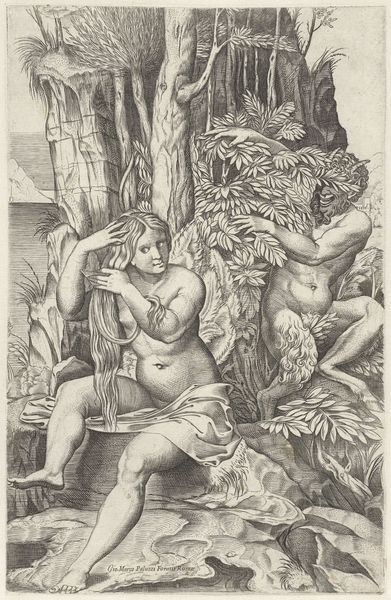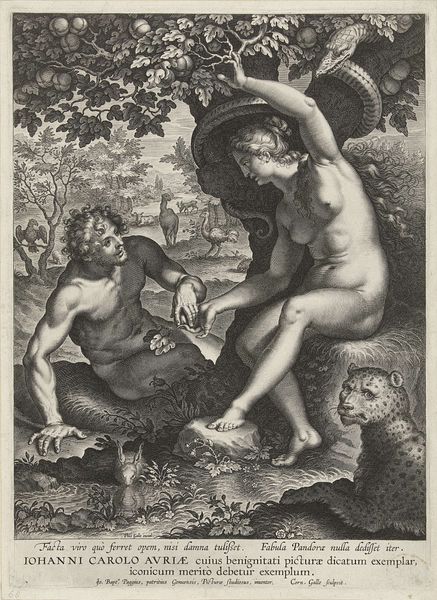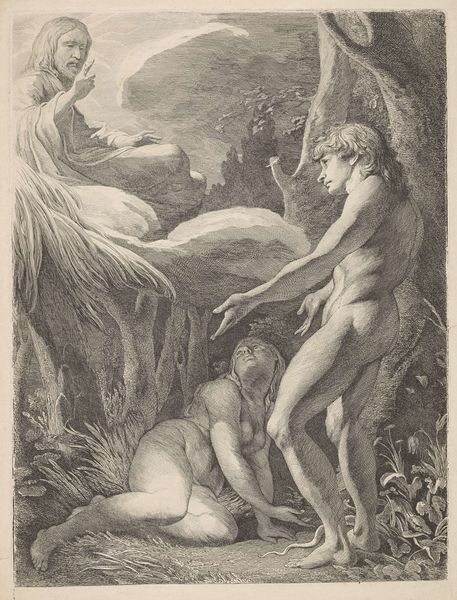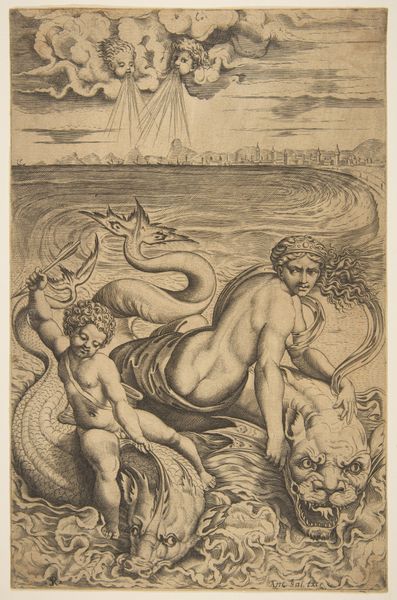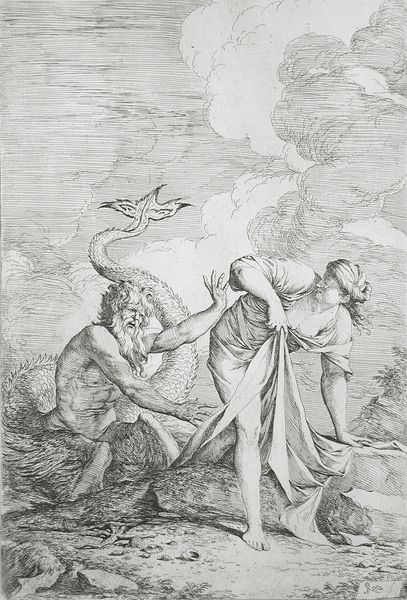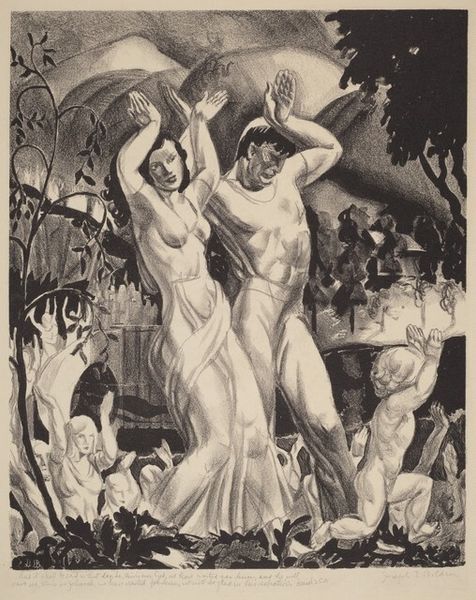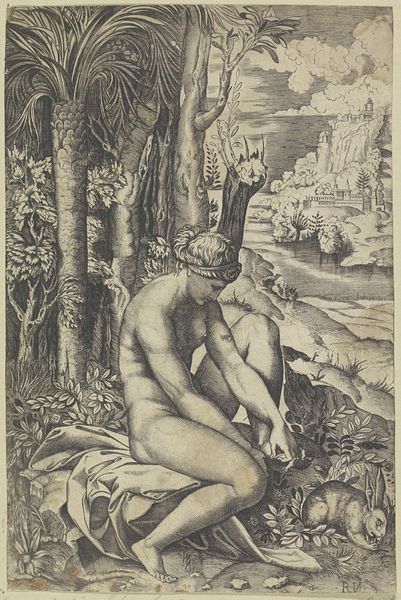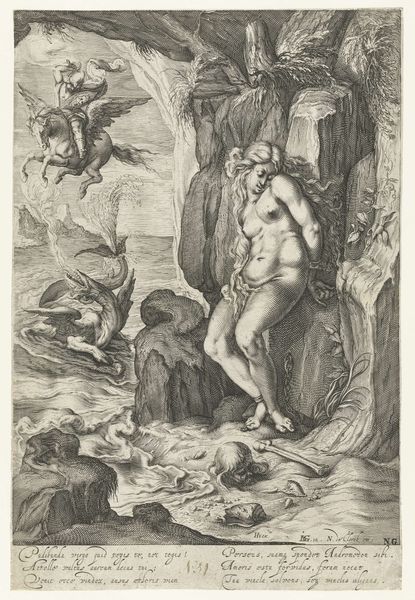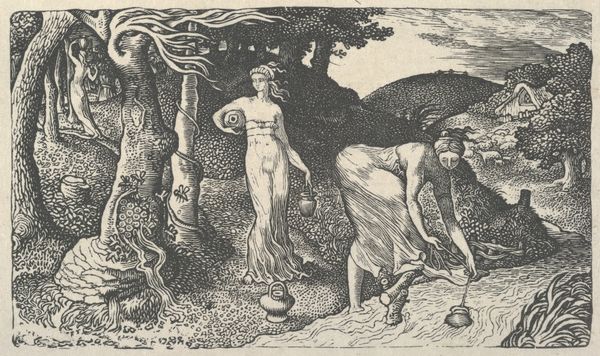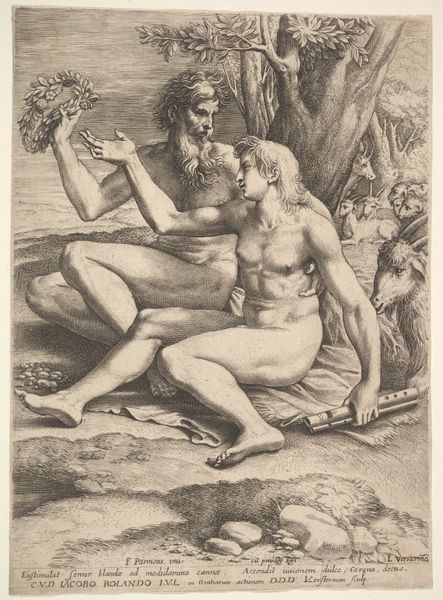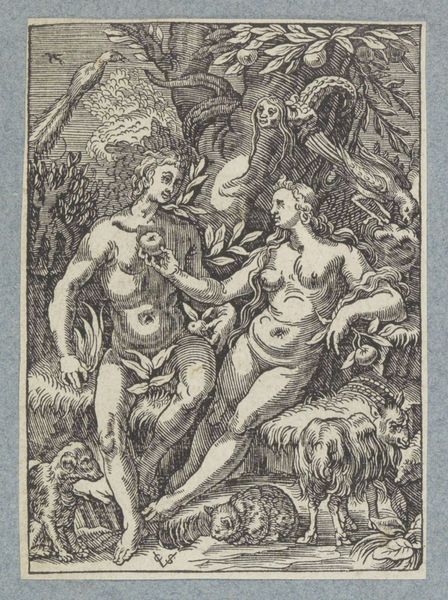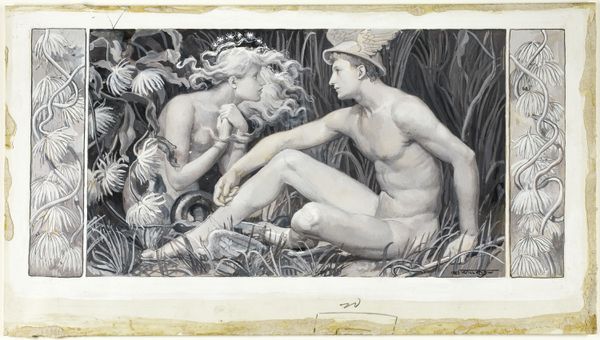
Dimensions: height 417 mm, width 316 mm
Copyright: Rijks Museum: Open Domain
Walter Crane rendered "Kaïn en Abel" in pen and ink, presenting a stark composition dominated by the contrast between light and shadow. The scene is structured around a sacrificial altar, where the billowing smoke draws the eye upward, yet the tension lies in the figures below. Crane masterfully employs line to define form, with dense cross-hatching creating depth and texture in the figures' garments and the surrounding landscape. This precise technique enhances the dramatic weight of the biblical narrative. The figures of Cain and Abel, positioned on either side of the altar, create a visual and thematic dichotomy. Cain's offering of produce is orderly, while Abel's sacrifice of a lamb evokes a sense of mortality. The composition uses a semiotic system of signs; the lamb represents innocence, while the fruits symbolize labor. Crane challenges the viewer to consider the ethical implications of sacrifice. The artwork isn't merely an illustration but a thoughtful commentary on morality and the human condition.
Comments
No comments
Be the first to comment and join the conversation on the ultimate creative platform.
